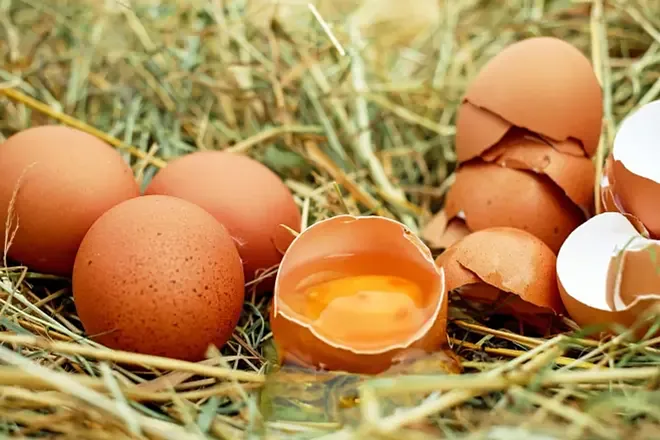When it comes to kitchen hygiene and efficiency, the cutting board is more important than most people realize. For years, cooks have debated whether plastic or wooden cutting boards are better. Now, a new contender is taking the lead: the bamboo cutting board. Combining durability, sustainability, and natural antibacterial properties, bamboo boards are transforming the way we prep food.

Why the Cutting Board Matters More Than You Think
Many home cooks focus on knives, appliances, or cookware—but the cutting board is where it all begins. According to chefs like Eduardo Aleman,
“The table is the zero point of everything you cook. If it’s contaminated, everything else will be too.”
Ignoring the surface where food is prepared can compromise hygiene and food safety.
- Plastic boards develop micro-cuts that harbor bacteria.
- Wooden boards require meticulous maintenance to prevent contamination.
- Bamboo boards combine the best of both worlds: durability, smoothness, and easier care.
Bamboo Cutting Board vs Plastic and Wood: A Side-by-Side Comparison
| Feature | Bamboo Cutting Board | Plastic Cutting Board | Wooden Cutting Board |
|---|---|---|---|
| Material | Fast-growing grass, eco-friendly | Petroleum-based | Slow-growing hardwood |
| Durability | Hard, resists knife cuts | Prone to micro-cuts | Can split or warp over time |
| Bacterial Resistance | Naturally antibacterial, less porous | Micro-cuts trap bacteria | Requires strict care and drying |
| Maintenance | Wash with mild soap, occasional oiling | Easy to clean | Frequent oiling and drying needed |
| Knife-Friendly | Smooth surface preserves edges | Can dull knives over time | Gentle if well-maintained |
| Environmental Impact | Renewable, sustainable | Non-biodegradable, polluting | Logging-intensive |
Key takeaway: Bamboo boards are harder, safer, and more eco-friendly than traditional cutting boards.
Why Bamboo Is a Game-Changer
Bamboo is not technically wood—it’s a grass from the grass family. This unique structure gives it several advantages:
- Harder and Less Porous – Bamboo absorbs less moisture than wood, limiting bacterial growth.
- Knife-Friendly Surface – The smooth surface prevents dulling and extends the life of your knives.
- Durable and Long-Lasting – Bamboo boards resist warping and splitting, unlike traditional wood boards.
- Eco-Friendly – Bamboo grows quickly, requires fewer resources, and is a renewable alternative to hardwoods.
Chefs and home cooks alike report that once you switch to bamboo, it’s hard to go back.
Health Benefits of Using a Bamboo Cutting Board
Food safety is a major concern in every kitchen. Bamboo cutting boards reduce risks in several ways:
- Less Bacterial Growth: The dense fibers of bamboo inhibit bacteria from penetrating the board.
- Easy to Sanitize: Smooth surfaces clean easily with soap and warm water.
- Reduced Cross-Contamination: Using separate bamboo boards for meat, vegetables, and fish can prevent dangerous bacteria like Salmonella and E. coli from spreading.
- No Microplastics: Unlike plastic boards, bamboo does not shed tiny particles into your food.
Switching your board may seem minor, but it directly impacts your kitchen hygiene and overall health.
How to Care for Your Bamboo Cutting Board
Bamboo cutting boards are easier to maintain than wood, but they still require proper care to maximize lifespan:
Daily Care
- Wash with warm water and mild soap after each use.
- Avoid soaking in water for long periods to prevent warping.
- Wipe dry immediately with a clean towel.
Weekly/Monthly Care
- Apply mineral oil occasionally to keep the bamboo fibers nourished and maintain a smooth surface.
- Sand lightly if the surface becomes rough or develops minor knife grooves.
Food-Specific Use
- Keep separate boards for meat, vegetables, and fish.
- This minimizes cross-contamination and ensures safer meal prep.
Pro tip: Bamboo boards are naturally resistant to odors, unlike plastic, which can retain strong food smells.
Bamboo Cutting Board: Eco-Friendly Kitchen Choice
Sustainability is a growing priority in the modern kitchen. Bamboo is a fast-growing, renewable resource that requires less water and energy than traditional hardwoods or plastic production.
Environmental benefits of bamboo cutting boards:
- Rapid growth: Bamboo reaches maturity in 3–5 years, compared to decades for hardwood.
- Low impact farming: Requires minimal pesticides or fertilizers.
- Biodegradable: At the end of its lifespan, bamboo decomposes naturally.
- Reduces plastic use: Switching from plastic boards helps lower your household’s plastic footprint.
Comparing Bamboo Boards: What to Look For
Not all bamboo boards are created equal. When shopping, consider these factors:
| Feature | Recommended Specs |
|---|---|
| Grain Type | Vertical grain for durability; horizontal for budget-friendly options |
| Thickness | 1–1.5 inches for stability and long-term durability |
| Edge Style | Juice grooves for meat, flat edges for vegetables |
| Finish | Food-safe mineral oil or beeswax coating |
| Weight | Heavier boards are more stable but harder to move; lighter boards are portable |
Tip: Choose a board that balances weight, size, and intended use for your kitchen workflow.
Bamboo Cutting Board vs Plastic: Why Bamboo Wins
| Factor | Bamboo | Plastic |
|---|---|---|
| Knife Impact | Gentle, preserves edge | Can dull knives faster |
| Hygiene | Naturally antibacterial | Micro-cuts trap bacteria |
| Environmental Impact | Renewable, biodegradable | Non-renewable, polluting |
| Durability | Long-lasting | Prone to scratches and stains |
Plastic boards are cheap and convenient, but they cannot match bamboo’s durability, hygiene, or environmental benefits.
Bamboo Cutting Board vs Wooden Board: The Practical Choice
| Factor | Bamboo | Traditional Wood |
|---|---|---|
| Maintenance | Occasional oiling | Frequent oiling and drying |
| Bacterial Resistance | Naturally resistant | Requires careful care |
| Durability | Hard, resists warping | Can split or dent |
| Knife Care | Smooth surface | Gentle if properly maintained |
While wood has long been the “classic” choice, bamboo offers superior hygiene with less effort.
How Switching to Bamboo Improves Your Kitchen
- Healthier Meals: Less bacterial contamination and no microplastics.
- Reduced Kitchen Maintenance: Easier cleaning and longer-lasting boards.
- Sustainable Choice: Less impact on forests and the environment.
- Professional-Grade Prep Surface: Smooth, knife-friendly, and stable.
Switching to a bamboo cutting board is a small investment that improves safety, convenience, and sustainability.
Bamboo Cutting Board Is the Future
Plastic and wood have been kitchen staples for decades, but the bamboo cutting board is emerging as the superior choice. Durable, bacteria-resistant, and eco-friendly, it provides a practical and hygienic surface for every meal prep task.
By upgrading to bamboo, you’re not just improving your kitchen hygiene—you’re making a conscious, sustainable choice that protects both your family and the planet.
In a world where kitchen safety is paramount, the cutting board is the unsung hero. Make the switch to bamboo, and you’ll notice the difference from the very first chop.






